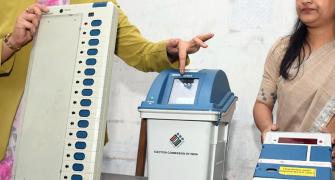India is currently in the throes of an entertainment revolution spawned by economic liberalisation and the subsequent advent of cable television. The players in the entertainment industry can be classified into three-link chain.
First are the studios (including the animation studios), which comprise the hardware part of the industry, the second are the content providers and the third link comprises the distribution trolley's, which include the cable and satellite channels as well as the multiplex theatres. Read more
|
|
The Indian Broadcasting Foundation (IBF) has asked for exemption of the broadcasting industry from service tax and bring it on par with the print media. |
|
|
Exemption of customs duty on set-top boxes (STBs) for at least another 3 years to ensure that customers get STBs at reasonable prices. Exemption of excise duty on STBs in order to encourage domestic production of STBs, |
|
|
The Indian Music Industry (IMI) has said that under the VAT regime, music cassettes and audio CDs should be reclassified from electrical/electronic machinery to publishing, as music is an intellectual property. |
|
|
Excise duty exemption on recorded audio CDs announced in Budget 2003-04 should be retained as the industry continues to suffer losses. |
| Budget 2001-02 |
|
Budget 2002-03 |
|
Budget 2003-04 |
|
|
|
|
|
| Service tax on broadcasting services.
Foreign telecasting companies brought under the tax net.
Import duty on cinematographic equipment reduced from 25% to 15%.
Convergence bill to be introduced in the current session of Parliament. |
|
Cable operators brought under service tax net.
Budgetary support for the Ministry of Information and Broadcasting increased by 22% to Rs 4.2 bn.
Customs duty on earth stations equipment and studio equipment reduced from 35% to 25%.
50% income-tax exemption for companies setting up and constructing multiplex theatres in non-metros. |
|
Recorded audio compact discs removed from the purview of excise duty.
Peak customs duty reduced from 30% to 25%. |
|
|
|
|
| |
| Key Positives |
|
|
|
With media getting industry status, one has seen an increasing number of players getting access to institutional finance. Further, with technology playing an important role in the upgradation of networks, both content providers and viewers are becoming sophisticated. Also, there is a significant transformation happening within the sector with content creators venturing into broadcasting and post-production, the broadcasters opting to grow via the subscription route. |
|
|
Apart from this, support from the government has also aided the growth of the industry. The government has liberalized the uplinking policy and reduced the rate of basic customs duties on import of certain specified equipments for setting up an earth station to aid broadcasting from India. Further, abolishing of excise duties to fight music piracy is also another positive gesture from the government. |
|
|
Further, imminent implementation of CAS (conditional access system) will curb the menace of under-declaration of subscribers by cable operators. Subscribers will then pay for only the channels of their choice. |
|
|
FMCG companies, which have been a key contributor to the total ad-spend of the industry, are increasingly concentrating towards rural markets. Broadcasters are launching regional channels to cater to a vast semi-urban/ rural population. In the long term, media companies can safely look to tap the FMCG industry to perk up revenues. Moreover, with new sectors opening up like telecom, healthcare and insurance, advertisements by these segments would also aid the adspend growth. | |
|
| Key Negatives |
|
|
|
Non-implementation of CAS as yet and over dependence on FMCG companies for advertisement revenues continue to be the two big threats for the industry. This is because while under-declaration of subscribers hits the subscription revenues of the industry, reduction in advertising budget (akin to 2002) by FMCG companies could pressurize ad revenues. |
|
|
With competition in the industry gathering steam, it could lead to burgeoning costs of production for media companies in the form of higher compensation in order to retain talent. Increasing number of channels could also cap the potential upside in ad realisations. This could put pressure on the bottom lines. |
|
|
The revenue model for the cable and satellite companies is still skewed in favour of cable companies. Cable operators are in a commanding position. However, this industry is likely to face consolidation with Multi System Operators (MSO's) like Incablenet, Siticable, Asianet, Hathway cable and Datacom buying over the small local cable operators (LCO's) and setting up their integrated network. | |

Equitymaster.com is one of India's premier finance portals. The web site offers a user-friendly portfolio tracker, a weekly buy/sell recommendation service and research reports on India's top companies.








